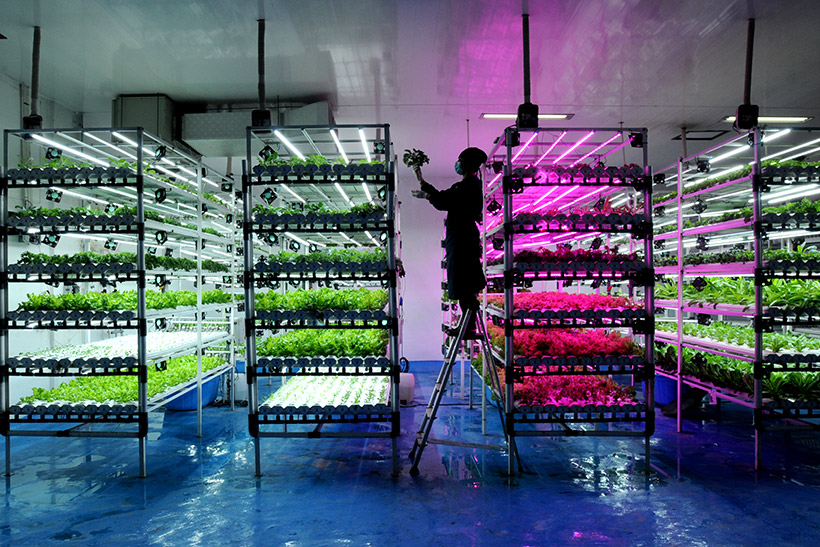The winning images from Environmental Photographer of the Year 2022 are as powerful as they are poignant. Amy Davies finds out more.
The striking winning photographs from this year’s EPOTY competition (sponsored by CIWM, WaterBear, Nikon and Arup), are at once beautiful and devastating.
Taking home the coveted overall prize is Mehdi Mohebi Pour for his image ‘The Bitter Death of Birds’, which was taken in 2021. It shows birds which have died in the Miankaleh Lagoon in Iran, due to lack of water and contamination. Environmental workers can be seen collecting the bodies of the animals to prevent the spread of disease.
Also winning this year is 16-year-old Fayz Khan. Taking home the Young Environmental Photographer of the Year, for his shot ‘Beautiful But Hostile Colours On Earth’, taken this year. It depicts lesser flamingos flying over Lake Magadi and Lake Natron in Kena. These two water bodies were once a single freshwater lake. But today they are two highly-concentrated salt pans, which are toxic to most forms of plant and animal life. Aside from the flamingos who love to feed on the surface.
The EPOTY competition is now in its 15th year and continues in its aim to showcase some of the world’s most inspirational environmental photography. The international judging panel received over 3,000 images from almost 1,600 photographers. 117 different territories across the world entered images into the competition, with photographers ranging in age from seven all the way up to 90.
For the first time this year, the competition also introduced an ethics panel in order to improve accountability and transparency in photo selection. It was designed to provide guidance on competition rules, as well as review any photos that raised ethical concerns. Any photograph which was deemed not to have met the competition’s ethical standards were discussed by the panel, with photographers requested to submit additional information in order for the panel to make an informed decision.
Speaking to AP, Terry Fuller, Chief Executive of CIWEM commented on introducing such a panel. “We the panel aims to establish good practice and to set the bar for ethics in photographic competitions. We hope that these steps support a shortlist of photographs of people and wildlife that meet the highest possible ethical standards and that represent people with dignity and respect. Tighter standards encourage entrants to delve deeper into their own processes, and to question approaches they may have taken for granted. The panel was a masterclass in respectful disagreement. Perhaps the challenge is this: we want sensational images. We cannot be sensationalist. CIWEM pledges to inform, educate and influence, grounded in fact, evidence and science. EPOTY harnesses the power of storytelling. It treads a fine line between raw depiction and staging that clarifies – even amplifies – the story. What matters is not to mislead people.”
The CEO of WaterBear, Sam Sutaria, said of the images from the competition, “The striking images truly highlight the importance of digital storytelling for raising awareness for the climate issues our planet faces. We hope that these thought-provoking images will encourage storytellers all over the world to continue sharing important stories to drive impact.”
You can see more images and read more information about how to enter the competition yourself at epoty.org.
Environmental Photographer of the Year 2022
The Bitter Death of Birds by Mehdi Mohebi Pour, 2021
“I was born in a very green and beautiful province in Iran. Photographing nature and wildlife has been something I have loved ever since I picked up the camera. For several years now, I have been researching the Miankaleh Wetland Project. As well as photographing the project, all the good and bad events that occur in the Wetland.
The Miankeleh wetland is being destroyed by changes in the climate and it is my duty as a photographer to highlight these problems and create a record for history. I want to prevent the complete destruction of the wetland and the potential environmental disaster by showing the issues and threats to the beautiful natural places.
I believe my image was noticed by the judges because it shows a scary perspective and the possibility of this happening all over the world. The photo highlights the danger to the planet.
For me, the biggest technical challenge in taking this photo was trying to survive. The high cost of the equipment, the low value of the country’s money, the lack of specific income and the lack of enforcement of copyright which leads to a lack of ownership over the work, all make it very hard to survive as a photographer.
My dream would be to publish a book for people around the world to see in order to highlight the importance of preserving and protecting the environment and all our natural resources, which has always been my priority. I believe we are all responsible for the environment around us and have a part to play, regardless of borders and nationalities.
Young Environmental Photographer of the Year 2022 – Nikon Award
Beautiful But Hostile Colours on Earth by Fayz Khan, 2022
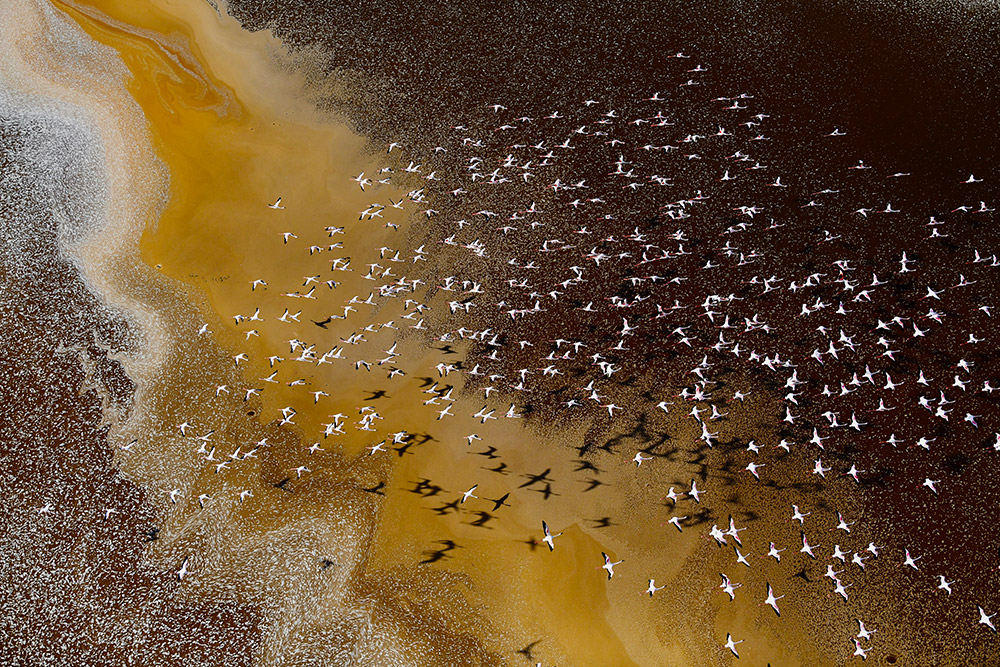
Beautiful But Hostile Colours on Earth by Fayz Khan, 2022. Young Environmental Photographer of the Year 2022 – Nikon Award
“My family and I had planned a trip to the Rift Valley in Kenya in 2020, but it had to be postponed due to Covid. A helicopter safari in the Rift Valley has been on my “Top 3” list of destinations ever since I saw images of the salt pans of Lake Magadi and Lake Natron. I always knew it would be a special trip. But I never knew how special until I saw with my own eyes the extraordinarily colours which change dramatically within a few seconds of flying over the lakes.
We were fortunate enough to be with a pilot who knew these lakes exceptionally well. We were in a chopper with “Doors Off”, which allowed me a huge amount of flexibility to frame my shot. The pilot had also advised me to be ready to take photographs of the flamingos when they were flying over light colours. Which in turn would allow me to capture the birds, as well as their shadows on the salty lake surface. I was also lucky to have the flamingos flying from the light to the dark region which was quite a poetic outcome. Given that the lakes are undergoing slow changes, making them more hostile over time to bird and animal life.
As experienced as the pilot was, it was a huge challenge for me to keep my hand steady in a moving aircraft with no doors and gusty winds. I had been instructed to remove the camera hood in case it flew off. I also had my camera in a double harness, and I had to twist around in my seat throughout the one-and-a-half-hour flight at very short notice.
Even though it did not feel like it, the helicopter was moving very fast, so I decided to play it safe and kept the shutter speed at 1/8000 s. In order to get as wide an expanse as possible, I kept the zoom at 70mm. During this particular shot, the sun was shining very brightly, and a good part of the subject was quite light, so I underexposed the shot to negative 2 ev. In order to ensure that the image would not get too dark I put the ISO to 800 and opened the aperture to f4 to balance the exposure.
I was using the Nikon D850 camera which has 45 mega pixels, this high resolution really helps bring out the beauty of the colours of the salt pans. I paired the D850 with the Nikon 70-200 which is super sharp at all ranges and very light, making it perfect for a helicopter safari.
At the moment I am most attracted to some sort of a career in social impact in Africa. I love Africa for many reasons, foremost of which is the wildlife and the preserved natural beauty of the continent. I am very hopeful that whatever career I choose to follow, I will have some time to devote to photography. What would be ideal is that I can use photography as a way to do my job in a better way.”
Environmental Photographer of the Year 2022 category winners…
New Ways to the Future (III) by Simone Tramone, 2021
Adapting for Tomorrow winner
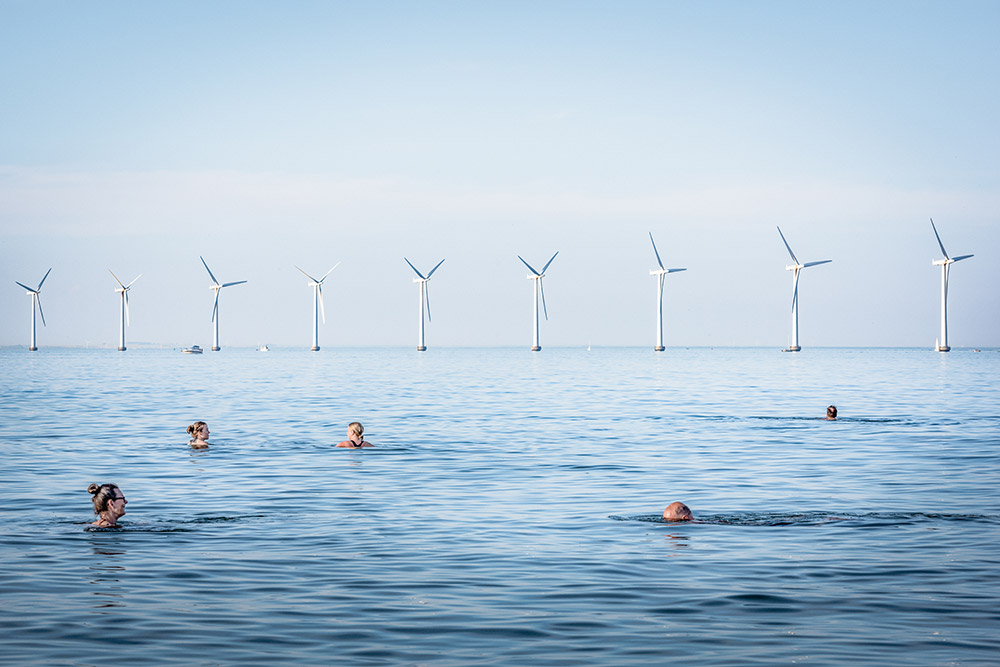
New Ways to the Future (III) by Simone Tramone, 2021. Environmental Photographer of the Year 2022 Adapting for Tomorrow category winner
This image shows a view of Middelgrunden offshore wind farm from Amager Strand, a very popular beach in Copenhagen. With strong involvement of the local community, the wind farm was developed by a co-operative. In the co-op are 8,552 electricity consumers, comprising of both private citizens nd small companies. The wind farm produces electricity for more than 40,000 households in Copenhagen. In Denmark 14.4% of electricity consumption is provided by wind, with more than 150,000 Danish families being members of wind turbine co-operatives.
Vertical Farming by Arie Basuki, 2022
Vision of the Future winner

Vertical Farming by Arie Basuki, 2022. Environmental Photographer of the Year 2022 Vision of the Future category winner
Here we see the maintenance of vegetable crops in a warehouse at Sentra Farm, Cimanggis, Depok (Indonesia). Various vegetables can be cultured here, including curly lettuce, romaine, oclave green, sioomak, kalian and more. Inside the room, the light and temperature remains stable. Another advantage of vertical farming is that it is free of pesticides with a harvest period of only 30 days, with an average yield of 20 to 30kg of vegetables per day.
Naturalia: Chronicle of Contemporary Ruins III by Jonathan “Jonk” Jimenez, 2021
Recovering Nature category winner
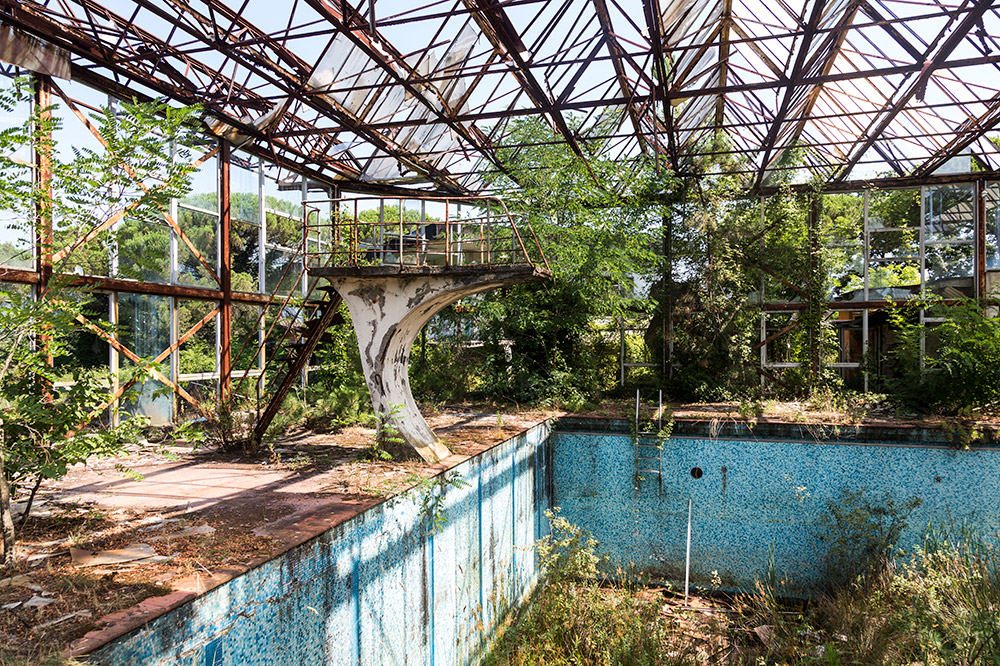
Naturalia: Chronicle of Contemporary Ruins III by Jonathan “Jonk” Jimenez, 2021. Environmental Photographer of the Year 2022 Recovering Nature category winner
Jonathan’s photo series looking at contemporary ruins asks a fundamental question: what is the place of mankind on Earth, and what is our relationship with nature. The image was taken in Pisa, Italy. The aim of the project is not to be pessimistic, but rather to awake our consciousness.
Chemical Explosion by Subrate Dey, 2022
Keeping 1.5 alive category winner
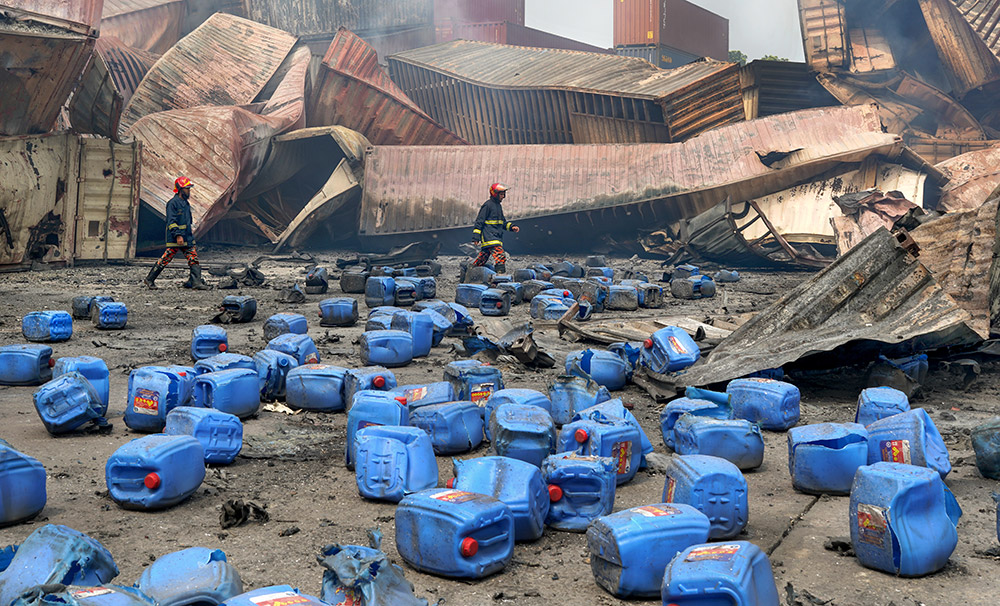
Chemical Explosion by Subrate Dey, 2022. Environmental Photographer of the Year 2022 Keeping 1.5 alive category winner
A chemical explosion and fire at a container depot in Sitakunda, Bangladesh took place on 4 June 2022. In the blaze, 49 people were confirmed dead, with the mixing of chemicals in the air and water having a devastating effect on the environment. Plastic containers from the depot spilled into the nearby river, destroying the fresh water supply after entering the aquifer.
The voting for the People’s Choice Award is now open to the public via social media. To vote, please visit www.instagram.com/environmental_photographer_oty.
To learn more about The Environmental Photographer of the Year winners and see more photos visit www.epoty.org.

